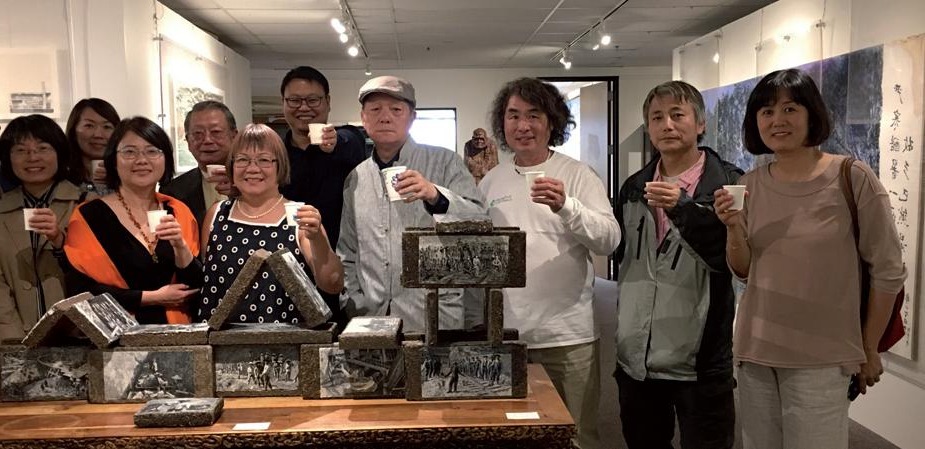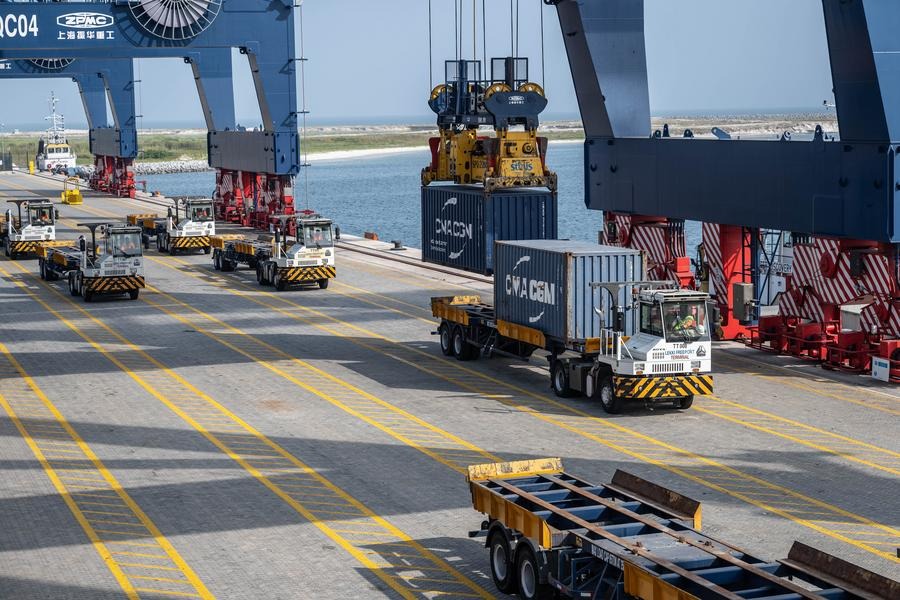Exhibit honors Chinese railroad workers


Chinese laborers who helped build the Transcontinental Railroad in the 1800s displayed craftsmanship and team spirit as they "cut through dense forests, laid down the rail bed and set ties and rails for almost 1,000 miles", according to archives at the California Railway Museum.
Now, The Shadow of the Golden Spike, a two-week exhibition featuring select artwork by three Chinese American artists, commemorates those workers and celebrates the 150th anniversary of the completion of the Transcontinental Railroad, built between 1863 and 1869.
Three artworks — History as a Cup of Afternoon Tea, consisting of old photographs of the Pacific Railway's construction and painted onto 24 tea bricks by He Gong; a 68-foot-long scroll titled Hometown in Foreign Land by Hou Ning; and a 56-foot-long, 4-foot-high color ink scroll 100 Miles of Nostalgia by Zhao Zhunwang — went on display April 27 at the Silicon Valley Asian Art Center in Santa Clara.
The exhibition has drawn throngs of patrons of varied backgrounds and inspired passionate discussions about the "achievements and sacrifice the Chinese laborers have made", and recognition and honors "they were due but never received".
In a preface to the exhibition, Gordon Chang, a history professor at Stanford University and co-director of the Chinese Railroad Workers in North America Project at the school, said that the first Transcontinental Railroad line that the Chinese workers helped build during the Civil War "linked the country as never before … and forever changed the nation".
In 1862, Congress ratified the construction of the Central Pacific Railroad from Sacramento across the nation to connect West and East. The Chinese workforce, numbering more than 20,000, who immigrated to California for the Gold Rush in the late 1840s, was drafted into the railway effort and gradually formed 90 percent of the construction labor on the western section of the line.
To clear the way for iron rail through the Sierra Nevada mountain range, which is composed of solid granite and blanketed by snow and ice in winter, Chinese workers used explosives and chisels to forge a tunnel inch by inch.
"Countless numbers died because of accidental explosions and snow slides," Chang said. "In scorching deserts of Nevada and Utah, they completed phenomenal work, including laying down a record-breaking 10 miles of track in less than 24 hours, a record that has never been broken."
Chinese workers "toiled ceaselessly for the Central Pacific Railroad, which … eventually extended all the way to Utah, near Salt Lake City. There at Promontory Summit in May 1869, it and the rail line that came from the east, the Union Pacific Railroad, met to complete the work," Chang noted.
Despite their major contribution to the railway's construction, Chinese workers were "largely forgotten and marginalized in American history. They were not acknowledged as helping make America a modern nation," Chang said.
On May 10, 1869, when dignitaries formalized the railroads' coming together with a ceremony now known as the Golden Spike, the president of the Central Pacific Railroad drove a ceremonial railroad spike made from gold into a ceremonial tie, without offering a single word about the role the Chinese workers had played.
"We organized this exhibition in order to memorialize the Chinese workers, the unsung heroes," said Shu Jianhua, the exhibition's curator.
Chang said the extraordinary works "provide deeply moving visualizations of the railroad workers, their work and their environment. We want them never to be forgotten or taken for granted. Art can help to recover their lives and connect us the living to those who have passed. What is today if not a continuation of history?"

































